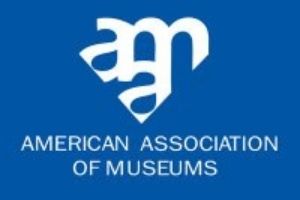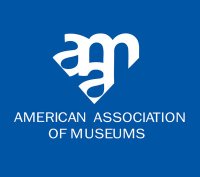AAM Re-Accreditation: Here we come!


Those questions have been much on my mind lately, as I help prepare the Museum for our decennial re-accreditation.
First a couple of answers:
What’s accreditation? In the words of the American Association of Museums, “Accreditation helps to advance the entire museum field. The AAM Accreditation Program is the single best tool for developing national standards and best practices in museum operations. It is an essential mechanism for understanding, refining, implementing and maintaining such standards. Accreditation is a way of demonstrating collectively, as a profession, that we are self-regulating and truly accountable.”
Plus, the JMM is one of only about 750 accredited Museums in the country, and we achieved accreditation in 1992 when we were still a very young institution—quite an honor, and one that’s helped keep us on our toes ever since.


How do we earn accreditation or become re-accredited? Take a look at the box of AAM materials in my office—including several printed handbooks, glossaries, forms, and disks, plus file upon file of materials we’ve gathered—and you’ll get a sense the scope of the requirements. Yesterday, I got together with Rachel Kassman, who’s helping me organize our application, to go over the list of attachments we’re required to submit. Our To Do list goes something like this:
Mission Statement—Got it.
Institutional Plan—Wait, do they mean strategic plan? Dig through glossary of terms to determine that, yes, these are one and the same and we do have one.
Evidence of delegation of authority to director—Become intimately familiar with by-laws to determine that they do, indeed, outline evidence of delegation.
Organizational chart including governing authority, staff and volunteers as applicable—Good thing we put one of those together when we were doing our strategic planning.
Position descriptions for all staff—Need to update those.
Visuals to illustrate scope of museum’s collections—I guess Rachel will be doing some photography.
Collections management policy—We’re in the midst of updating that, along with program policy, ethics policy, library policy, and all our other policies. The Board will review and approve all.
Samples of materials that illustrate range of programs for students and teachers (4 max); samples of museum publications and/or nonprint media materials (4 max)—“4 max”? That’ll barely scratch the surface. How are we going to choose?
Copy of current fiscal year budget, approved by board for operating, nonoperating income and expenditures; audited financial statements for last 2 fiscal years, including management letters; investment policy—Thank goodness Susan Press is on top of all this.
Emergency/disaster plan—Good thing that one’s up to date.


And that’s just a small sampling . . . .
All this plus completing a series of self-study forms with hundreds of questions about everything from finances to facilities to collections stewardship to governance. It’s a bit like filling out a grant application on steroids, and I’m very grateful that almost everyone on staff is pitching in, that our trustees are providing thoughtful guidance as we update all our policies, and that it isn’t due until June.
It’s a lot of work and a lot of tying up of loose ends, and a lot of considering what we do from a critical angle. Like staff at most museums, we dash along from day to day, consumed by myriad tasks and demands and distractions. We don’t always have the time or energy to devote conscious attention to the policies that guide us or the ethical considerations that inform our decisions about everything from how we greet our visitors to what exhibitions we develop. Instead, we’re generally guided by a sense that the things we do are mission-critical. And we’re usually right. But deconstructing the considerations that inform our day to day activities adds a new level of insight into all that we do. And preparing for AAM re-accreditation—essentially a protracted spell of navel gazing—helps us to think about what inspires us, to ensure that we continue to conform to the highest standards, and to set a course for our future activities.
All that said, I’m glad re-accreditation only rolls around once every ten years.
